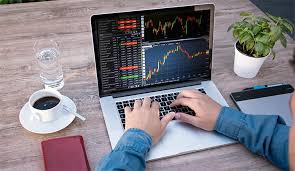
In the fast-paced world of forex trading, utilizing the right tools and platforms can significantly influence your success. One such platform that stands out is TradingView, known for its user-friendly interface and robust features. In this article, we will delve into the intricacies of trading forex in TradingView and explore how you can leverage its capabilities to boost your trading skills. For more information on trading platforms, visit trading forex in tradingview Trading Platform HK.
1. Understanding Forex Trading
The foreign exchange market, commonly known as forex, is the largest financial market in the world, where currencies are traded. Unlike traditional stock markets, forex operates 24 hours a day, five days a week, enabling traders to access the market at their convenience.
1.1 Why Trade Forex?
Forex trading offers numerous advantages, including high liquidity, lower transaction costs, and the ability to trade on margin. Moreover, with a plethora of currency pairs available, traders can diversify their portfolios and take advantage of various trading strategies.
2. Why Choose TradingView for Forex Trading?
TradingView is a popular web-based platform that provides a comprehensive suite of tools for both novice and experienced traders. Here are some reasons why you should consider TradingView for your forex trading activities:
2.1 User-Friendly Interface
The intuitive design of TradingView makes it easy for users to navigate through charts, indicators, and trading tools. This accessibility is particularly beneficial for beginners who may feel overwhelmed by complex trading software.
2.2 Advanced Charting Tools
TradingView offers a wide range of charting options, allowing traders to customize their charts according to their preferences. Users can select different time frames, chart types, and technical indicators to analyze market trends more effectively.
2.3 Community and Social Networking
One of the standout features of TradingView is its vibrant community of traders. Users can share their trading ideas, write articles, and engage in discussions, fostering a collaborative learning environment.
2.4 Multi-Device Accessibility
As a cloud-based platform, TradingView allows traders to access their accounts from any device, be it a desktop, tablet, or smartphone. This flexibility is crucial for traders who want to monitor the markets on-the-go.
3. Setting Up Your TradingView Account

To start trading forex on TradingView, follow these simple steps:
3.1 Registration
Visit the TradingView website to create an account. You can opt for a free account with basic features or subscribe to a paid plan for access to advanced tools and real-time data.
3.2 Choose Your Currency Pairs
Once registered, you can select the currency pairs you wish to trade. TradingView provides access to a wide variety of pairs, including major, minor, and exotic currencies.
4. Utilizing Trading Indicators
TradingView comes with a plethora of technical indicators that can enhance your trading strategy. Here are a few commonly used indicators:
4.1 Moving Averages
Moving averages help smooth out price action and identify trends. Traders often use the Simple Moving Average (SMA) and Exponential Moving Average (EMA) to make informed trading decisions.
4.2 Relative Strength Index (RSI)
The RSI is a momentum oscillator that measures the speed and change of price movements. It ranges from 0 to 100, with readings above 70 indicating overbought conditions and below 30 indicating oversold conditions.
4.3 Bollinger Bands
Bollinger Bands consist of a middle band (SMA) and two outer bands that indicate volatility. When the price nears the upper band, it may be overbought, while prices near the lower band may be oversold.
5. Developing a Trading Strategy
A successful trading strategy involves thorough analysis and planning. Here are some steps to consider when developing your strategy in TradingView:
5.1 Identify Your Trading Style
Are you a scalper, day trader, or swing trader? Understanding your trading style helps you tailor your strategy accordingly. Each style requires different tools and approaches.
5.2 Conduct Technical Analysis
Utilize TradingView’s charting tools and indicators to perform technical analysis. Identify key support and resistance levels, chart patterns, and market trends to make informed decisions.

5.3 Backtest Your Strategy
TradingView allows you to backtest your strategies using historical data. This feature enables you to assess the effectiveness of your approach before applying it in real-time trading.
6. Risk Management in Forex Trading
Effective risk management is crucial for long-term success in forex trading. Here are some strategies to consider:
6.1 Set Stop Loss and Take Profit Levels
Always set stop loss and take profit levels to protect your capital and secure profits. This practice helps mitigate potential losses and ensures disciplined trading.
6.2 Manage Leverage Wisely
Leverage can amplify both your gains and losses. It’s essential to use leverage responsibly and not exceed your risk tolerance.
6.3 Diversify Your Portfolio
Diversification can reduce risk by spreading your investments across different currency pairs and trading strategies. Avoid putting all your capital into a single trade.
7. Continuous Learning and Adaptation
The forex market is constantly evolving, and successful traders must adapt to changing market conditions. Here are some tips for ongoing education:
7.1 Join Online Communities
Participate in TradingView forums and social media groups to share knowledge and learn from other traders. Engaging with the community can enhance your understanding of market dynamics.
7.2 Stay Updated with Market News
Keep abreast of global economic events and news that may impact currency prices. TradingView offers news alerts and economic calendars to help you stay informed.
7.3 Attend Webinars and Tutorials
Many experienced traders and educators offer webinars and tutorials that can deepen your understanding of forex trading and TradingView features. Take advantage of these resources.
Conclusion
Trading forex in TradingView can be a rewarding endeavor, provided you equip yourself with the right tools and knowledge. By understanding the platform’s features, developing effective trading strategies, and implementing robust risk management practices, you can enhance your trading experience and increase your chances of success in the forex market.
As you embark on your trading journey, remember that continuous learning and adaptation are critical components of becoming a successful forex trader. Embrace the tools and resources available to you, and may your trades be profitable!